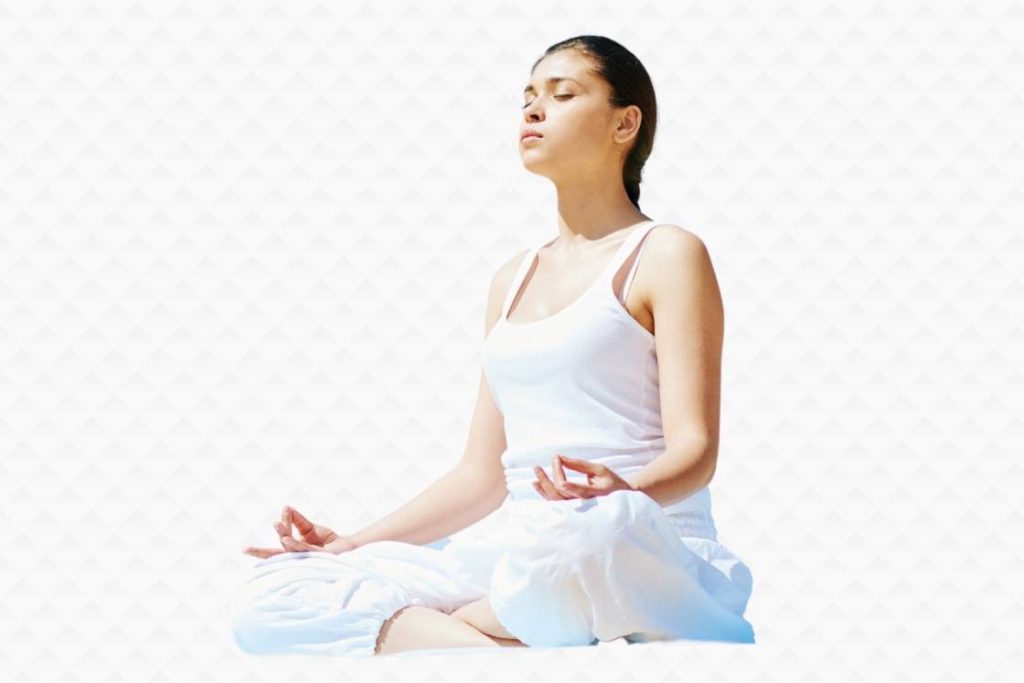
Almost everyone, from teenagers to the elderly, is highly affected by high blood pressure, which is a very common ailment.
A higher occurrence of high blood pressure has been linked to poor lifestyle choices such as eating the wrong things, being inactive, and having trouble sleeping. Stroke and heart disease are more likely to affect those with high blood pressure.
Yoga can help lower blood pressure by bringing these lifestyle changes: exercise, maintaining a healthy weight, and stress reduction.
Pranayama, a part of yoga that deals with breathing and its regulation, is highly effective to control blood pressure. It plays a vital role in calming the mind, stabilizing the heart rate, and increasing lung capacity, all of which can directly lower blood pressure.
In this article, we will discuss which pranayama is good for high blood pressure, how it works, and which pranayama one must avoid in case of hypertension.
What is high blood pressure?
When your blood pressure is higher than the normal range, it is typically called high blood pressure (also known as hypertension). Before understanding the situation of high blood pressure, we should first understand what is normal blood pressure.
The force of blood against the artery walls is known as blood pressure.
Systolic blood pressure is the first number, and it represents the pressure in your arteries while the heart beating.
Diastolic blood pressure, or the second number, gauges the pressure in your arteries between heartbeats.
You would say “120 over 80” or write “120/80 mmHg” if the measurement was 120 systolic and 80 diastolic.
Symptoms of high blood pressure
Even when blood pressure measurements are extremely high, most persons with high blood pressure don’t exhibit any symptoms. Without showing any signs, high blood pressure can exist for years. This is also the reason it is known as the “silent killer”.
However, a few people might exhibit the following symptoms:
Headaches
Shortness of breath
Nosebleeds
Sweating
Facial Flushes
The majority of the time, they don’t show up until high blood pressure has become serious or life-threatening. You are putting at risk your life if you disregard your blood pressure in the hope that another symptom or sign would make the issue obvious.
Keeping a regular check on your blood pressure by either going to a healthcare professional or measuring it at home with a BP machine is the best way to keep your BP in check.
Problems due to high blood pressure
The harm increases as blood pressure rise and remains uncontrolled for a longer period. Important organs including your heart, brain, kidneys, and eyes might suffer severe damage. High blood pressure damages blood vessels and internal organs by placing an excessive amount of pressure on the artery walls.
You may experience complications like:
Heart attack, heart failure, heart disease, or stroke
Aneurysm
Chest pain
Chronic kidney disease
Thickened, narrowed, or torn blood vessels in the eyes
Metabolic syndrome
Reduces cognitive ability
Dementia
How pranayama helps in lowering high blood pressure?

One direct aspect of pranayama’s effective working for high blood pressure comes from its ability to activate the parasympathetic nervous system.
When we do pranayama which involves slow and deep breathing, our parasympathetic nervous system (rest-and-digest system) gets activated. The activation of the parasympathetic nervous system immediately sends relaxing signals to the brain resulting in a decrease in heart rate and dilation of blood vessels. This results in easy flow of blood in artery walls and hence reduces high blood pressure.
The respiratory and cardiovascular systems are closely related. Consciously controlling the breath through pranayama positively affects cardiovascular indicators such as chest pressure, blood vessels widening, etc. This is due to the fact that different types of pranayama breathing create variations in heart rate, which in turn directly impacts blood pressure.
The physiological effects of pranayama are designed to be therapeutic. It unites the body and mind and gives the body oxygen while expelling toxins. Pranayama’s stress-relieving qualities enhance sleep quality, boost mindfulness, and lower blood pressure.
